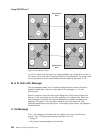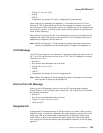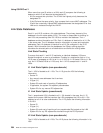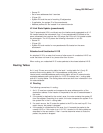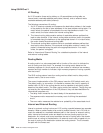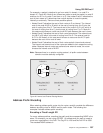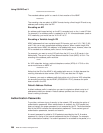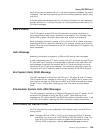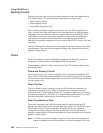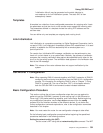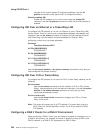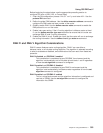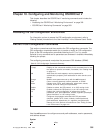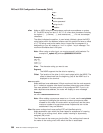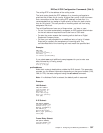Routing Circuits
Routing circuits are point-to-point connections between nodes that implement the
ISO CLNS protocol. The router employs these types of routing circuits:
v Static incoming circuits
v Static outgoing circuits
v Dynamically assigned circuits
Static incoming and static outgoing circuits have only one SVC associated with
them, and they carry both user data and non-user data (such as routing protocol
messages). You bring static circuits up and down explicitly using DECnet V/OSI
configuration commands. Dynamically assigned routing circuits are established
upon data arrival and are cleared when there is no data being transmitted or
received. A dynamically assigned circuit can have multiple SVCs, but can carry only
user data.
DECnet V/OSI controls calls for each of the types of routing circuits by using
filters
and
templates
. Filters are used to process incoming calls; templates are used to
establish outgoing calls.
Filters
A
filter
is a collection of user-configurable parameters that define the criteria for
accepting all incoming calls for the specified X.25 routing circuit.
The parameters defined in a filter include the calling DTE address, a filter priority,
and call/user data.
Filters and Routing Circuits
Incoming calls can be on a static incoming circuit or a dynamically assigned (DA)
circuit. One or more filters may be defined for the same routing circuit. For example,
a DA circuit can have multiple adjacencies and more than one filter may be defined
for that routing circuit.
Filter Priorities
The list of filters for static incoming circuits and DA circuits are intermixed and
ordered by descending priority. When an incoming call is received, the router
searches the list of filters, highest priority first. To prevent a static circuit from being
erroneously assigned to a DA circuit, it is recommended that the filters of all static
circuits be assigned a higher priority than the filters of all DA circuits.
Filter Constraints on Calls
For a static incoming circuit, the filter should specify a particular calling DTE
address, but the first octet of the call/user data must contain the ISO 8473 Protocol
Discriminator (129). For correct operation of multiple DA circuits, additional
constraints should be configured for each defined filter. This ensures that the
selection criteria specified in those filters permit the required distinction to be made
between incoming calls.
Note: If a DA circuit should incorrectly connect to a static circuit, the architecture
makes no attempt to identify the condition or rectify the problem. The usual
Using OSI/DECnet V
300
MRS V3.2 Protocol Config Ref Vol 2



